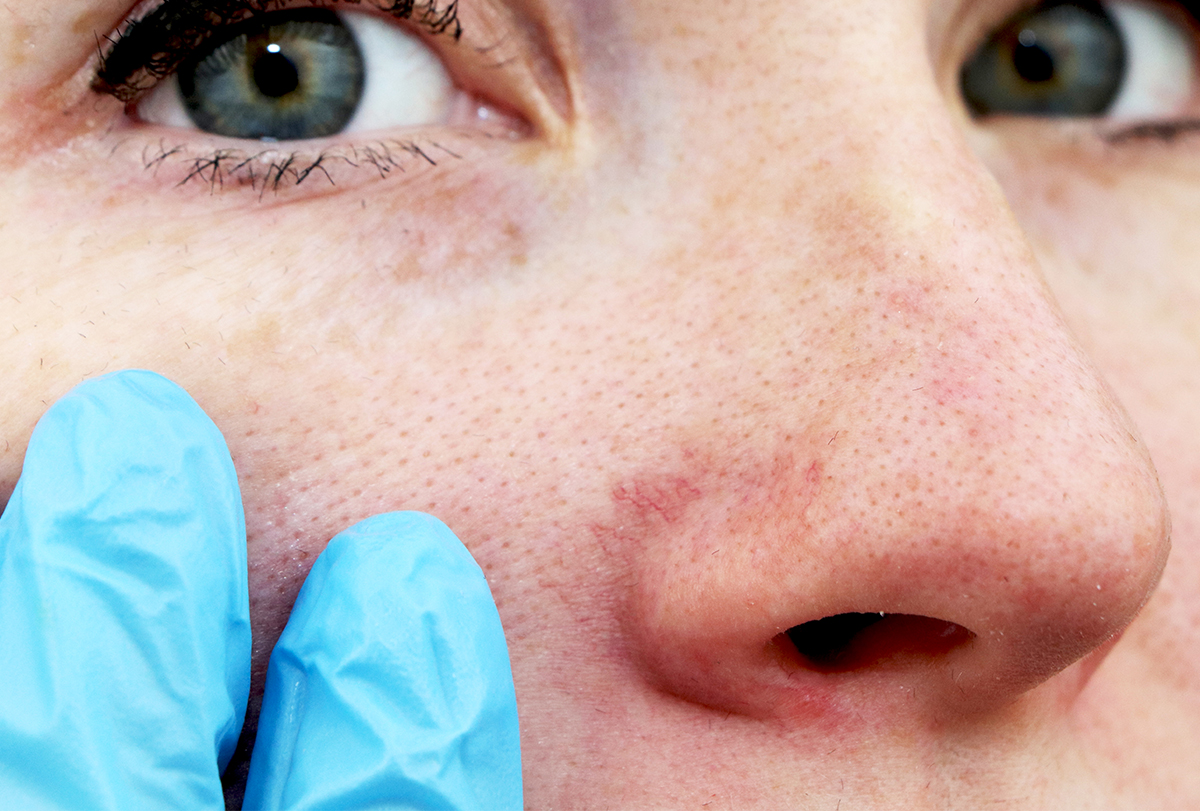

What part of the body does skin lupus affect?

Hair loss can be all over the scalp, patchy, or “lupus hair,” where the hair in the front and on the sides of the scalp are thin and fragile. Some people feel mild itching or pain with these rashes. Plugged hair follicles (hair follicles clogged by thick skin) and scarring appear in sun-exposed areas. The discoid lupus rashĭiscoid lupus is a thick, coin-shaped rash that can be red or dark. It can be delayed from a few days to a few weeks after sun exposure. The rash can be red and scaly, or form ring shapes. People with lupus get flares of rashes in areas of skin exposed to the sun, like the chest or the arms. The sun-sensitive lupus rash on the face, chest, arms, and legs Usually, there are no symptoms, but some people describe it as a little painful or itchy. The classic lupus “butterfly” rashĬonsidered a telltale sign of lupus, this is a red rash - flat or raised - in a butterfly shape on the cheeks and the nose. Below, we discuss some of the most common early skin signs. Skin issues are the first sign in 20% of people with lupus. They affect 70% to 80% of people who have the condition. The work was funded in part by the Lupus Research Institute, the Lupus Foundation of Minnesota, and the National Institutes of Health.Skin symptoms are common in people with lupus.

“Therefore, elevations may be predictive three months in advance.” Repeating the experiment with 375 new patients yielded similar results. “The difference in symptoms between the two groups started to appear three months after the test showed elevated chemokines,” Gillespie says. Among the 222 patients who felt well at the beginning of the study, blood levels of the four chemokines were low in some, but in others they were significantly elevated to varying degrees (three-fold elevations were common).įollowing the patients for one year, researchers found that those with elevated chemokines were significantly more likely to have a flare in the next year. To find out, they initially studied 300 patients. “So we thought, could this be trouble brewing?” Yet “some patients with not-so-active disease also had high levels,” says Gillespie. By screening 160 proteins in patients’ blood, they found four chemokines whose levels were elevated in patients with active lupus. While studying gene activity in patients’ white blood cells, Gillespie discovered a link between severe forms of lupus and the production of chemokines-small proteins secreted when the immune system is activated. “We’d like doctors to be able to predict what’s going to happen and give patients some peace of mind or warning.” “A test should help physicians to more effectively manage the disease and improve patient quality of life.”įlares can be treated, usually with heavy doses of steroids, but it would be much better if patients could be spared those treatments until they are really necessary, Gillespie explains. “We’d like to develop a clinical test that will help doctors know when a patient is about to go into a clinical flare,” says Emily Gillespie, assistant professor of medicine at the University of Minnesota. The warning sign has allowed researchers to develop a test using four chemokines that are produced in response to another chemical released by an active immune system: type I interferon, which gets its name from its ability to interfere with viruses trying to replicate in the body. By then it may be too late to prevent damage to organs, because often it’s the damage that produces the symptoms. People with lupus may go for months or years without a “flare,” then wake up one day with symptoms like headache, lethargy, or lupus’s hallmark butterfly-shaped rash on the face. Systemic lupus erythematosus is an autoimmune disease caused by the body’s immune system attacking its own tissues that strikes mostly African American women of childbearing age, causing damage o joints, heart, liver, kidneys, and other organs.īut capriciousness is perhaps the disease’s most maddening feature.

MINNESOTA (US) - A chemical warning sign has been found in the blood of patients with lupus that appears to occur when a flare is getting ready to erupt.


 0 kommentar(er)
0 kommentar(er)
